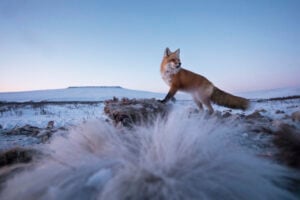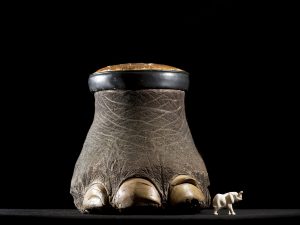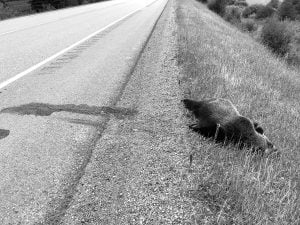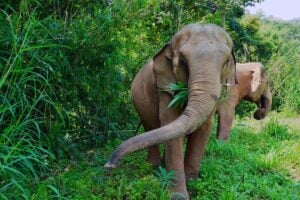
Wildlife
Do not disturb: Practicing ethical wildlife photography
Wildlife photographers on the thrill of the chase — and the importance of setting ethical guidelines
- 2849 words
- 12 minutes
This article is over 5 years old and may contain outdated information.
Wildlife

Turns out it wasn’t always a simpler time way back when.
A group of British and Canadian scientists have discovered a 560-year-old fossil that shows signs of the oldest known complex muscled animal in the world.
The first and only one of its kind, the fossil was found in the Port Union area on Bonavista Island in Newfoundland by a group of researchers from Memorial University and the University of Oxford.
“It was a combination of awe and shock that there could be something so beautiful and so different that nobody ever managed to see before,” says Duncan McIlroy, a Canada Research Chair and one of two supervisors on the find.
Discovered in 2009, the specimen has so far been characterized as part of the Cnidarian group of animals, which also includes jellyfish, corals and sea anemones. It’s been named Haootia quadriformis — quadriformis for its four-radial symmetry and Haootia, the Beothuk word for devil or evil spirit, which reflects the animal’s squished bat-like imprint.
The Beothuk were one of the first groups of people in Newfoundland.
“The fossil itself looks completely unlike anything that’s in these rocks. There are lots of fossils from Ediacaran period organisms in it and they’re all very similar with fractal patterns, whereas this object had long ridges,” McIlroy says.
There’s little wildlife information from the Ediacaran Period, which dates back 545 million to 635 million years. Up until now, it was known mainly to consist of life forms like bacteria, algae or other soft-bodied specimens that don’t fossilize well.
Geologists and biologists have been struggling with this for years, going all the way back to Darwin.
“It seemed like Earth history had been empty of animals and then all of a sudden, the world was full. And that’s something we call the Cambrian explosion,” McIlroy says.
The explosion was known to be the origin and spread of animals in the world.
“What people haven’t been able to demonstrate is positive evidence that they were actually there before — until now.”
McIlroy and other researchers found a trail earlier in the same levels of rock that showed signs there were animals with muscles in the assemblage of fossils present, but there were no animals at the end of the trail that could offer proof.
Even now, the recently discovered fossil does not have any remains of the animal. It is just an impression of the outside of an organism that was soft and collapsed.
While researchers are still studying the site, they are in talks with the province about removing the fossil to protect it from weather, waves and ice in the winter.
“We think it’s too valuable to leave in the field,” McIlroy says, emphasizing it’s the only one they have.
If removed, it would be placed in Newfoundland’s provincial museum.
Are you passionate about Canadian geography?
You can support Canadian Geographic in 3 ways:

Wildlife
Wildlife photographers on the thrill of the chase — and the importance of setting ethical guidelines

Wildlife
An estimated annual $175-billion business, the illegal trade in wildlife is the world’s fourth-largest criminal enterprise. It stands to radically alter the animal kingdom.

Wildlife
This past summer an ambitious wildlife under/overpass system broke ground in B.C. on a deadly stretch of highway just west of the Alberta border. Here’s how it happened.

Travel
From South African penguins and Canadian bears to Australian wombats and Bolivian pumas, Robin Esrock introduces inspiring wildlife sanctuaries where volunteers make all the difference